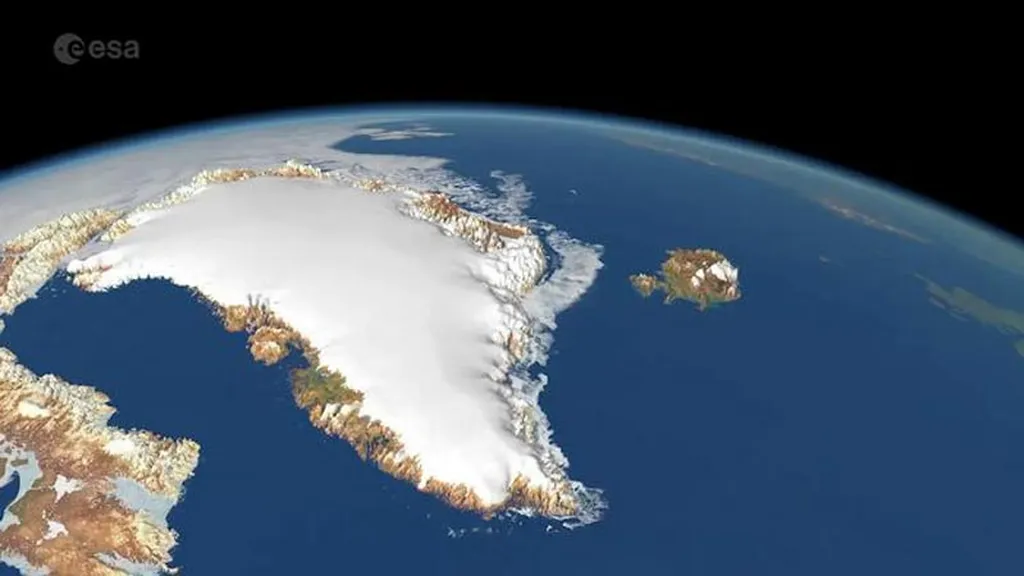In the vast, icy expanse of southwestern Greenland, a silent transformation is taking place, one that could have profound implications for our understanding of climate change and its impact on global energy systems. A team of researchers, led by Dr. T. Feng from the College of Surveying and Geo-Informatics at Tongji University in Shanghai, has developed a novel method to monitor the evolution of supraglacial lakes (SGLs) with unprecedented accuracy. Their findings, published in the journal *The Cryosphere* (which translates to *The Ice Sphere*), offer a new lens through which to view the dynamics of the Greenland ice sheet and its role in the global climate system.
Surface meltwater runoff is a critical factor in the mass balance of the Greenland ice sheet. During the melting season, water accumulates in low-lying areas, forming SGLs. These lakes are not just passive features of the landscape; they play an active role in the ice sheet’s mass balance and contribute to sea-level rise. However, until now, quantifying the spatial and temporal changes in the volume of these lakes has been a significant challenge.
Dr. Feng and his team have tackled this challenge head-on by combining optical imagery from the Sentinel-2 satellite with data from the ICESat-2 satellite altimetry mission. “We developed a method that first extracts the area of SGLs using a random forest model based on spectral features from Sentinel-2 imagery,” Dr. Feng explained. “This achieved an impressive intersection over union (IoU) of 90.20% compared to manually delineated lake extents.”
But the team didn’t stop there. They went on to detect the depth of SGLs along the ICESat-2 profile using a kernel density analysis method. The real breakthrough came when they used a multi-layer perceptron (MLP) model to construct a nonlinear relationship between the reflectance ratio from Sentinel-2 imagery and the depth of SGLs detected by ICESat-2 data. “The accuracy of depth inversion based on the MLP model surpasses traditional empirical formula methods, achieving a mean absolute error of just 0.42 meters,” Dr. Feng noted.
The implications of this research are far-reaching, particularly for the energy sector. As the world grapples with the impacts of climate change, understanding the dynamics of the Greenland ice sheet becomes increasingly important. The energy sector, in particular, is keenly interested in the potential for increased hydropower generation as meltwater runoff increases. However, this comes with significant risks, as the stability of the ice sheet is a critical factor in global sea-level rise, which can impact coastal infrastructure and energy facilities.
The research also sheds light on the elevation-dependent evolution of SGLs. The team found that SGLs above 800 meters exhibit a similar evolution pattern, with a temporal discrepancy in maximum values for both mean area and mean depth. This implies differential rates of SGL development in the horizontal and vertical dimensions. The elevation range of 1200 to 1600 meters was found to be the most favorable for the evolution of SGLs.
As we look to the future, this research could shape the development of more accurate models for predicting the behavior of the Greenland ice sheet. It could also inform strategies for mitigating the impacts of climate change, particularly in the energy sector. By providing a more detailed understanding of the dynamics of SGLs, this research offers a valuable tool for policymakers, scientists, and industry professionals alike.
In the words of Dr. Feng, “Our method provides a powerful tool for monitoring the volumetric evolution of SGLs, which is crucial for understanding the surface mass balance changes of the ice sheet during the melt season.” As we continue to grapple with the challenges posed by climate change, this research offers a beacon of hope, a testament to the power of innovation and the potential for technology to illuminate the path forward.

